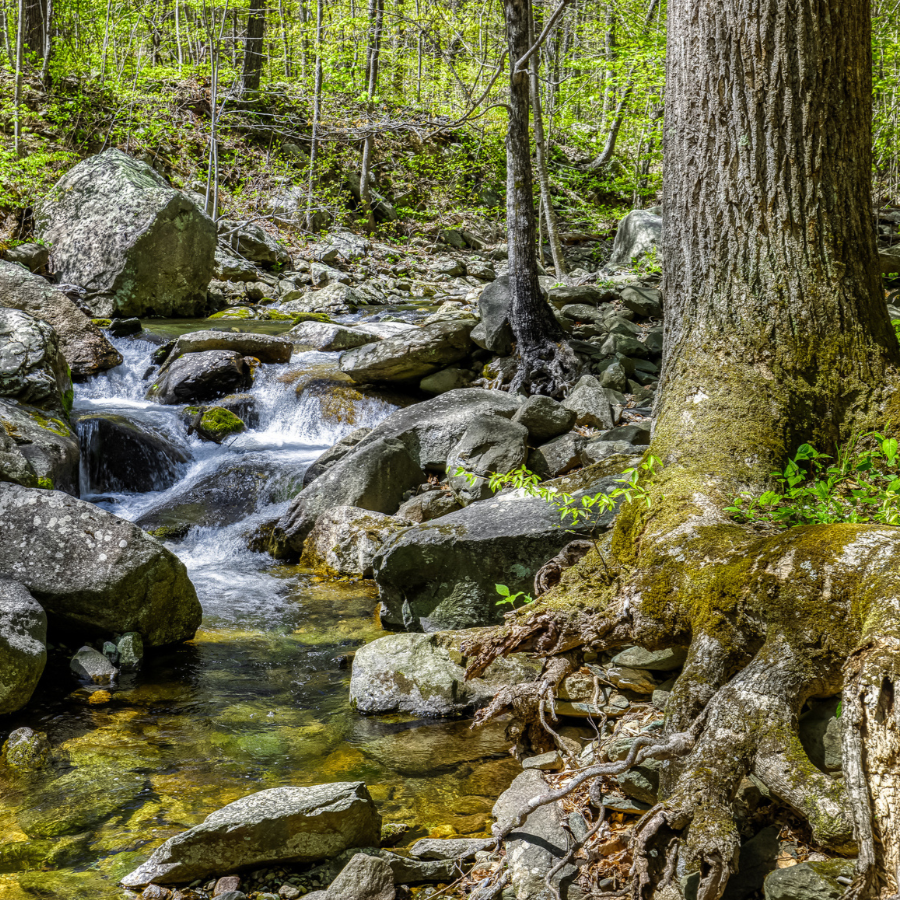Nature’s mast years: the mystery of the tree's bountiful seeds and acorns in the fall
/Mast years mean more seeds – but what’s the reason for this occasional boost?
Bag of acorns near a tree by the river
Every few years, you may notice something unusual during the fall – an extraordinary amount of tree nuts, like acorns and black walnuts. It’s not an illusion – it’s actually a recurring ecological phenomenon called a mast year. And although mast years tend to happen approximately every two to five years, the reason for this synchronized boost in productivity remains a bit of a mystery! So, why – and how – do trees do this?
Acorns and oak leaves on a tree
Many types of tree species all around the world synchronize their seed production. In the Potomac River region, this includes species like oaks, hickories, pawpaws, black walnuts, and serviceberries, but also understory species, such as black gum trees, dogwoods, and redbuds. And, the reason for this synchronized boost in seasonal production has a lot to do with the seeds or nuts these trees produce.
Tree nuts, like acorns, are an energy-filled resource for a wide variety of wildlife species, from tiny beetles to birds to beefy black bears. By coordinating the timing of their seed production, it’s more likely these seed-eating species will be satiated before they can eat all the surplus seeds produced during a mast year – and this means, ideally, the rest of the seeds are left to sprout and grow into trees.
And, for species like oak trees that rely on animals like squirrels and blue jays to carry away and stash their nuts, a mast year means more acorns hidden away and buried – and inadvertently spread over the landscape. Of course, mast years also have a big impact on the food chain.
“During mast years, there are several animals that benefit and have an increased chance for the winter: deer, squirrels, flying squirrels, woodpecker, jays, and other acorn-eating birds, voles and mice.”
How Do Trees Do It?
Trees near the potomac river with their leaves changing color
But just how do all these trees synchronize their production? While the process remains a bit mysterious, there are a few key factors that impact the coordinated boost in production.
1. First of all, producing an exceptionally big crop of nuts or seeds involves an exceptional amount of energy - a process that relies on photosynthesis, that is, harnessing the sun’s energy to convert carbon dioxide into sugar and starch.
But, the process - especially the added energy expenditure - is taxing on trees. So, after a mast year, trees often need a few years to regenerate and replenish their stored starches before the next mast year.
2. Weather is another significant influence on when trees have a mast year, especially during the spring. For instance, a chilly spring can limit the amount of flowers a tree can produce and, in turn, affect the number of seeds the tree can generate during the fall.
However, weather patterns and temperatures during the summer can also have a major impact, particularly droughts. This is because, during an extended or especially severe summer drought, many tree species will typically close the pores on their leaves in an effort to preserve water, but doing so reduces the amount of carbon dioxide captured for photosynthesis.
Fall foliage at an overlook in Maryland
Since all the trees in our region experience the same seasonal weather patterns, this can help them coordinate their seed production during a mast year. This means the global climate crisis could also affect the frequency of mast years.
In the Potomac River region, the climate crisis is already altering seasonal weather patterns, and causing heavier rainfall and higher seasonal temperatures. Storms and other forms of extreme weather - including droughts - are also becoming more frequent and more intense.
3. Research also indicates trees may communicate with each other to coordinate a mast year. Although they stand alone, trees are connected to their arboreal neighbors through an elaborate subterranean network of fungi that resembles the neural pathways in our own human brains!
And thanks to this connectivity, trees may be communicating with other trees through the use of chemical signals. For example, trees being damaged by insects or other predators may send warning signals to other trees, alerting them to produce an enzymatic defense against the destructive pest. So, are trees talking to one another about mast years too? While there’s no definitive answer yet, underground communication could help trees in a local area coordinate their production.
So, what are the benefits?
With all the communication – and energy expenditure – that goes into coordinating a mast year, just why do trees do it? Well, in short, it’s to give the next generation a better chance at germinating - and growing into trees. But even a mast year is no guarantee.
“With more sprouting oaks, that may normally mean an increase in the wildlife that feed on them, such as caterpillars and other insects, and the birds and bats that then feed on them. That is a may as it depends on if they get big enough, which may not happen at all with the overpopulation of deer.”
There are benefits for humans too. Of course, more tree nuts, like acorns, mean there’s more to collect – and donate to community-driven initiatives working to reforest our region – like Tomorrow’s Trees!
Volunteer sorting out non-viable acorns from the viable ones
The spike in seed collection can be a huge boost to regional forestry programs working to reforest our region with locally-evolved species that provide a wide array of benefits, including cleaner water. Healthy trees and forests are essential for clean water in the Potomac River region because rivers and streams also stabilize shorelines, preventing erosion and reducing sediment pollution.
So, if you spot extra acorns on the ground this fall, grab a bag and start collecting!












